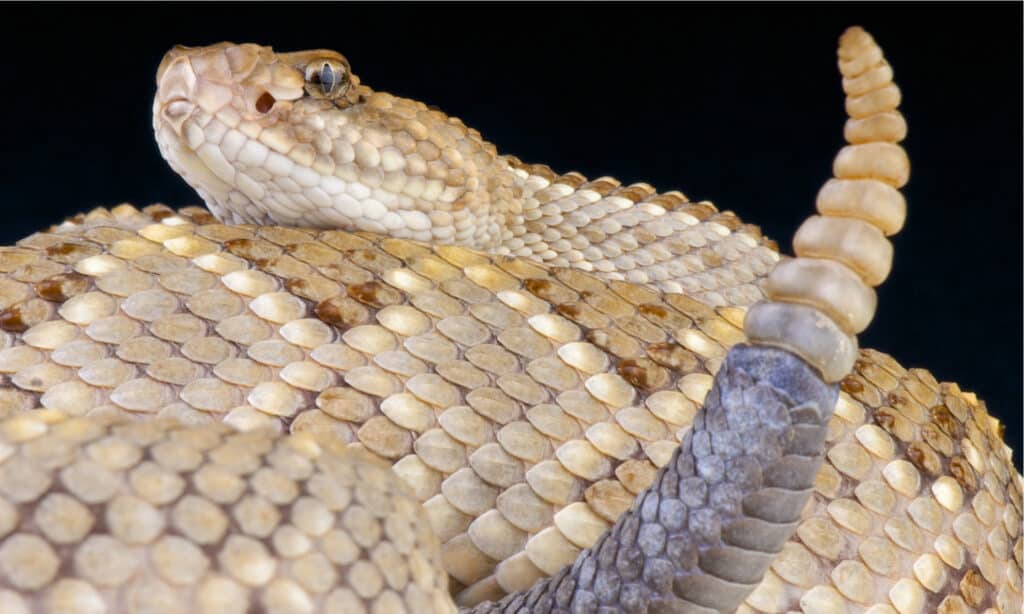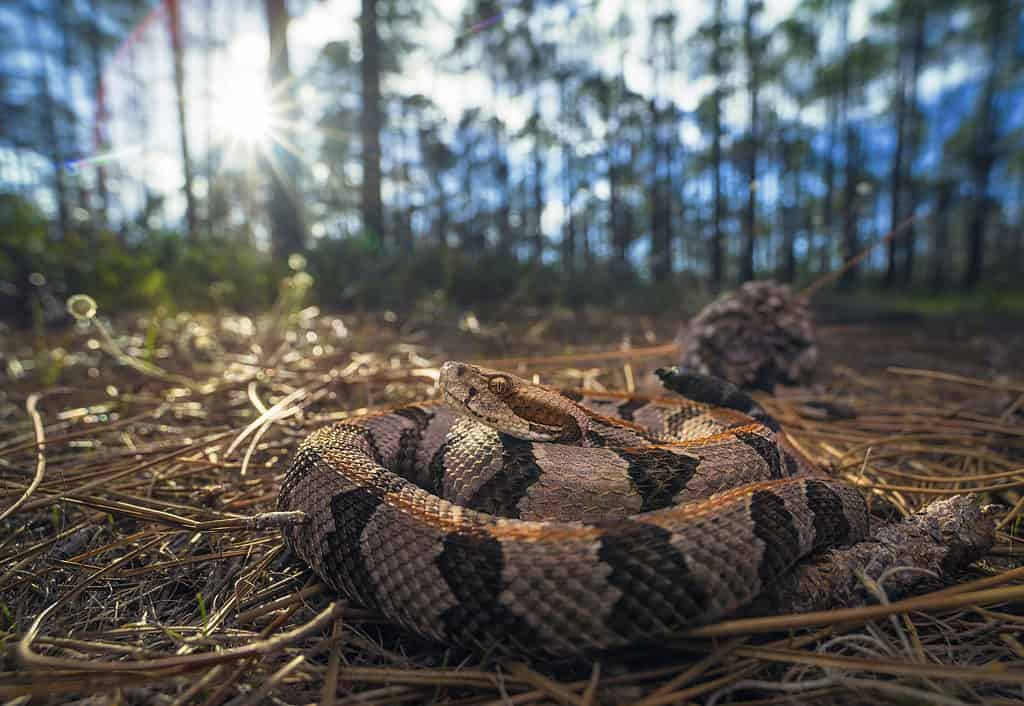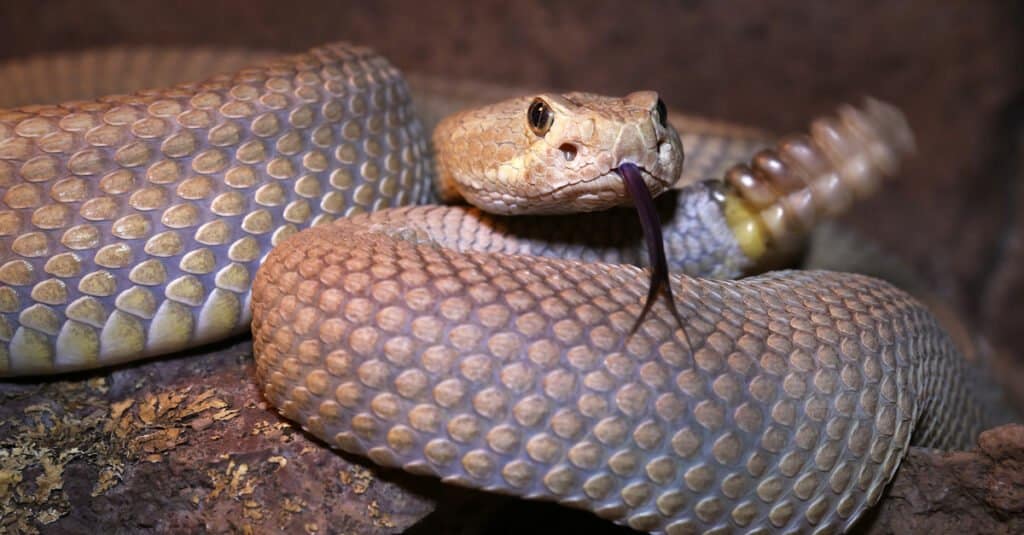Continue reading for our analysis...

The name “rattlesnake” is sufficient to trigger anxiety and fear in many. However people residing in natural snake habitats have found ways of living alongside these reptiles.
Scientists have discovered 36 rattlesnake species living in North and South America. Thirteen of these species are in Arizona, more than you’ll find in any other state.
Consequently, people in Arizona are used to seeing these serpents and have learned to walk, jog, and hike while watching their steps. They have also learned to stay away from their business.
We see these scenes in a video taken by a hiker in different parts of Arizona.
The hiker comes across the first rattlesnake along Finger Rock Trail in Tucson. The rattlesnake soon begins making the all too familiar and chilling rattling sound as it prepares to strike should he ignore the warning.
The Science Behind the Rattling Sound
The rattling sound originates from vibrating the tail section. Several snake species vibrate their tails for different reasons.
Tail vibration among rattlesnakes is a defensive mechanism that the serpents engage in when they feel threatened. But pythons and boas use their tails to lure prey.
Hollow interlocked keratin segments at the serpent’s tip form a rattling sound as they click and rub against each other. Keratin is the same material in human hair and fingernails. Once the snake feels threatened by a predator’s presence, it raises the tip of it and quivers its muscles to trigger the clicks responsible for the sound.
The sound-making structure is hollow, which acts as a resonator that amplifies the rattling sound when sound waves bounce inside the walls. The relatively ample hollow space inside the structure explains why the rattle is louder in rattlesnakes.

Rattlesnakes create their familiar rattling sound by vibrating their tail.
©reptiles4all/Shutterstock.com
A Sleeping Rattlesnake
The videographer encounters the next rattlesnake at Sabino Canyon, also in Tucson. The snake appears to be sleeping beside a path. Rattlesnakes typically sleep in crevices, under logs and rocks, or near trees and other objects.
Knowing when a snake is sleeping is challenging because its eyes remain open. After all, snakes don’t have eyelids.
Hence, you’ll never know if it’s lying, waiting for prey to come within striking distance, or sleeping. For your safety, if you come across a rattlesnake, leave it alone and stay away from its path.

Since snakes do not have eyelids, it’s hard to tell when they are sleeping.
©Kristian Bell/Shutterstock.com
Everyone Minding Their Business
The next scene at Tucson’s Sabino Canyon is the most captivating in the entire video. It shows a rattlesnake, almost two meters long, crossing an asphalt road from left to right. Two shirtless joggers encounter the snake but pass behind it as the snake moves across the road.
What’s interesting is the way the snake remains unbothered even as they jog near its tail.

Generally, rattlesnakes are not aggressive unless provoked.
©Audrey Snider-Bell/Shutterstock.com
Perfect Camouflage
The next two scenes emphasize how careful you should be when walking in the wild. In the preceding scene at Tapeats Creek, Grand Canyon, a rattlesnake coils itself under the roots of trees crossing a path. It blends into the environment, and it’s only after he zooms the video that you see the snake.
The serpent neither rattles nor does anything to make its presence known. But the videographer wisely decides to leave it alone and takes a different path to the river. The video shows a similar scene at Upper Tapeats, Grand Canyon. It’s almost impossible to spot the snake until you’re within striking distance.
How Many Snake Species Are in Arizona?
Arizona is home to a diverse range of snake species, with estimates suggesting that there are between 40 and 60 different species found in the state.
Some of the more commonly encountered species in Arizona include:
- Western Diamondback Rattlesnake
- Mojave Rattlesnake
- Sonoran Desert Corn Snake
- Gopher snake
- Night Snake
- Coachwhip
- Lyre Snake
- Arizona Black Rattlesnake
- Arizona Mountain Kingsnake
It’s important to note that while some species of snakes in Arizona are venomous, they will typically only bite if they feel threatened.
If you encounter a snake in the wild, it’s best to give it space and respect its personal space.

The Mojave rattlesnake is best known for its potent neurotoxic venom.
©Ryan M. Bolton/Shutterstock.com
Discover the "Monster" Snake 5X Bigger than an Anaconda
Every day A-Z Animals sends out some of the most incredible facts in the world from our free newsletter. Want to discover the 10 most beautiful snakes in the world, a "snake island" where you're never more than 3 feet from danger, or a "monster" snake 5X larger than an anaconda? Then sign up right now and you'll start receiving our daily newsletter absolutely free.
Thank you for reading! Have some feedback for us? Contact the AZ Animals editorial team.






